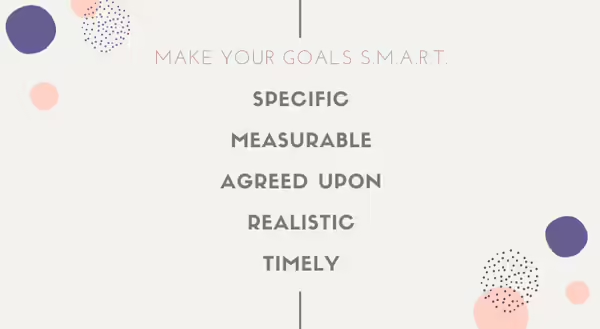
Creating a savings goal is commonly confused with creating a dream. For example, when asked to create a savings goal for a vacation trip or a car, their response is “I want to go to [location]” and “I want to have a [car model]”. This only represents what individuals want (a dream) without creating a reasonable process (savings goal) to achieve the end product.
That being said, we peer educators from Illinois Extension’s Financial Wellness program advocate S.M.A.R.T. Goals. When creating a savings goal, it is important that you incorporate all 5 of these components: Specific, Measurable, Agreed Upon, Realistic, and Timely.
Specific: Making your goal well defined where it can be clear to anyone who has a basic knowledge of your project
Measurable: Creating an easy way to keep track of your goals that allow it to be motivational to achieve
Agreed Upon: In cases when your goal involves others, collaborate and make sure that everyone acknowledges the goal
Realistic: This allows your goal to be results-oriented and reasonable seeming accomplishment is within sight
Timely: Create a timeline when this goal will be achieved. Being able to track your progress encourages you to continue and see that the effort is effective
Create your own SMART goals using the My Financial Goals List on our website.
Written by Rex Wang, Financial Wellness for College Students Peer Educator, University of Illinois Extension, Spring 2017. Reviewed by Kathy Sweedler, University of Illinois Extension.